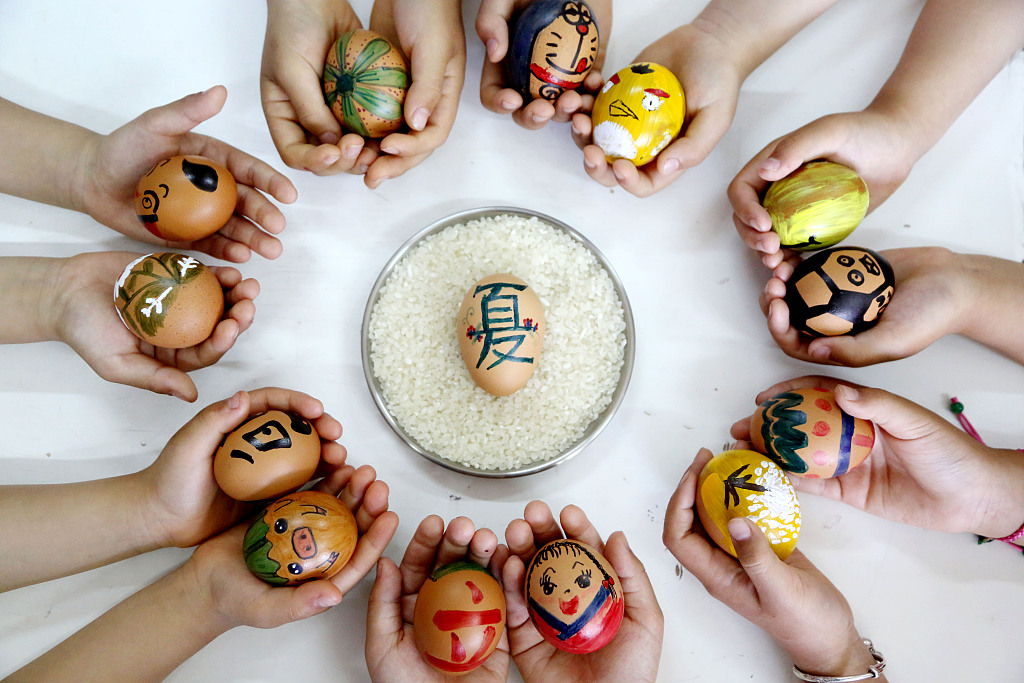With many places across China seeing the temperatures rise lately, people on Thursday welcomed Lixia, the seventh solar term in the Chinese lunar calendar to mark the arrival of hot summer days.
This solar term, dating back to the Warring States Period (475–221 BC), comprises two Chinese characters: "li" means "begin," while "xia" refers to the summer season.
Ancient records have it that the 15 days of this solar term were divided into three phases, five days each, respectively marked with crickets chirping in the fields, earthworms crawling out of the soil and melons growing rapidly, all reflecting a period when various species grow vigorously.

Villagers are busy working at a vegetable planting base in Zhangjiajie, central China's Hunan Province, May 5, 2022. /CFP
Villagers are busy working at a vegetable planting base in Zhangjiajie, central China's Hunan Province, May 5, 2022. /CFP
That's why farmers since ancient times carried out agricultural activities largely based on the change of solar terms. The temperature conditions are most suitable for rice transplanting around Lixia. It's also the busiest season for tea farmers as they don't want to miss the perfect timing to pick tea leaves, otherwise they over-matures.
There used to be a variety of customs to celebrate the occasion in the past, some of which are still popular till today, such as eating eggs.

Children paint eggs to mark Lixia at a kindergarten in Lianyungang, east China's Jiangsu Province, May 5, 2022. /CFP
Children paint eggs to mark Lixia at a kindergarten in Lianyungang, east China's Jiangsu Province, May 5, 2022. /CFP
People would boil eggs in the early morning of Lixia as they believe eating eggs would protect them, especially their children, from inappetence and other health issues amid hot weather. Some parents would also make a small bag out of colored threads to carry an egg and hang it around their child's neck, which is believed to bring good luck to the offspring.
In some regions, people would eat bamboo shoots, peas and broad beans during this period.
(Cover image via CFP)

